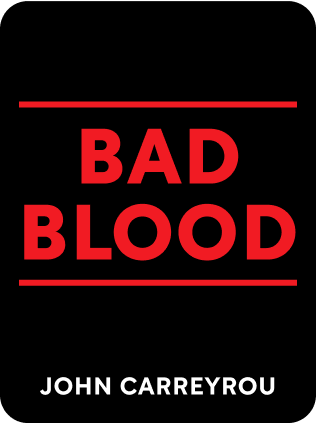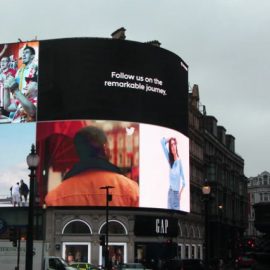

This article is an excerpt from the Shortform book guide to "Bad Blood" by John Carreyrou. Shortform has the world's best summaries and analyses of books you should be reading.
Like this article? Sign up for a free trial here .
What was the Theranos Walgreens deal? How did this deal fail and what did it mean for Theranos?
The Theranos Walgreens deal was a commitment by Theranos to provide Edison products to Walgreens locations. Despite not having the product, Theranos defrauded Walgreens, who eventually ended their agreement.
Read more about the Theranos Walgreens deal.
The Theranos Walgreens Deal
Theranos had a vision people wanted to believe in – “detect diseases early so no one has to die unnecessarily.” All types of stakeholders saw what they wanted to see in it, allowing large suspension of disbelief.
- Investors saw a huge financial opportunity. The medical testing market is huge – allowing patients to test at home, and using the resulting data to inform medical decisions, makes it even bigger.
- Patients and their families saw better decisionmaking and less pain.
- The public saw a thrilling female founder who could be the next Steve Jobs. They wanted to celebrate a brilliant female innovator in an age of female empowerment.
- Partners like Walgreens and Safeway saw a way to compete against competitors like CVS, and to rejuvenate their financials. So they partnered with Theranos to roll out blood-testing clinics at their locations.
- Senior mentors like George Schultz, General Mattis saw a granddaughter-like figure to mentor. So they lent their name to Theranos as advisors.
- Anyone with equity (employees, investors, and advisory board included) had a huge incentive to believe the company would work.
Elizabeth Holmes practiced charismatic techniques to win over supporters.
- Elizabeth spoke sincerely and enthusiastically about the mission. It gave the impression that there was no way someone with this sincerity could be beguiling.
- To the Walgreens CFO, Elizabeth gave a gift of an American flag “flown over Afghanistan” with a dedication to Walgreens written on it.
- Many people repeated: “she had this intense way of looking at you while she spoke that made you believe in her and want to follow her.” Here’s an example of Holmes speaking in a Theranos promotional video.
- She apparently affected her voice to be a strikingly low baritone, possibly convinced it would lead to better results in a male-dominated world.
When scientific manipulation wasn’t enough, Theranos actively deceived people and lied by omission, including in the Theranos Walgreens deals.
- To press and investors, Elizabeth embellished claims level of accuracy and number of assays that could be run on their proprietary machine.
- In truth, its accuracy was poor and it could run much fewer tests than claimed. They relied on third-party devices to run most of their assays, meaning Theranos was far less innovative than believed.
- Then, when regulators came to audit their operations, Theranos employees blocked investigators from accessing the room containing their new machines, misleading them into believing their third-party machines were the only ones operating. In fact, their faulty proprietary machines were inappropriately processing samples, when they weren’t improved to do so.
- Theranos was scheduled to run demonstrations for pharmaceutical company partners. When their devices didn’t work live, they ran fake demonstrations instead.
- Requests from a Walgreens employee to run validation tests on their machines were dismissed.
- The senior Walgreens management didn’t push back, because once they were committed to building out Theranos facilities, they desperately needed Theranos to work.
- Revenue projections to investors were vastly embellished by >5x.
- Outsiders had the impression that Theranos was flying high – that in a military partnership, Theranos devices were in the back of Humvees; that Theranos had plenty of secure partnerships with big name firms; that Theranos was cash flow positive. Naturally, Theranos didn’t care to correct them
Ending the Walgreens Deal
Theranos overreached in ambition, causing them to require delivering at some point.
- They promised too much to Walgreens and had to deliver. This prompted them to cheat.
- Why not wait until the miniLab was ready? Elizabeth Holmes: “When I promise something to a customer, I deliver.”
- Thus, Theranos continued lying to the public, pretending it had a working device and giving real lab results in Walgreens centers, when really the results were flawed.
- Elizabeth wanted to achieve the vision of a small device that did everything (immunoassays, general chems, hematology, DNA). The form factor came before the underlying technology worked, and ultimately they couldn’t design something that had a chance of working.
Theranos stepped too far down the slippery slope of deception, until even their strong-arm tactics couldn’t hold back a conscience.
- Embellishing results in prototyping phase was somewhat acceptable. Lying about real patient data, which affected clinical decision making, crossed the line for many employees.
- Many employees left; most stayed quiet due to fears of reprisal; some brave whistleblowers let conscience override fear, and they reported to regulators and reporters.
- Doctors were increasingly furious about incorrect lab reports leading to inappropriate patient treatment. They cooperated with the reporting.
In the downfall of the Theranos Walgreens deal, momentum and vicious cycles are as punishing as they are powerful on the way up.
- Once the evidence of Theranos’s failure became clear, the flywheel effect worked in the opposite direction. Walgreens dropped the Theranos Walgreens partnership; regulators fixated their attention on Theranos; the public lambasted her and the gullibility of Theranos’s supporters; sources readily reached out to reporters to share useful information; investors sued Holmes for fraud.
When the Theranos Walgreens deal ended, the deception became clear. Theranos’ days were numbered.

———End of Preview———
Like what you just read? Read the rest of the world's best book summary and analysis of John Carreyrou's "Bad Blood" at Shortform .
Here's what you'll find in our full Bad Blood summary :
- How a 19-year-old Stanford dropout created a fraudulent company that deceived savvy investors
- What Theranos claimed their proprietary technology could do
- How psychological biases could cause you to fall for such a deception






